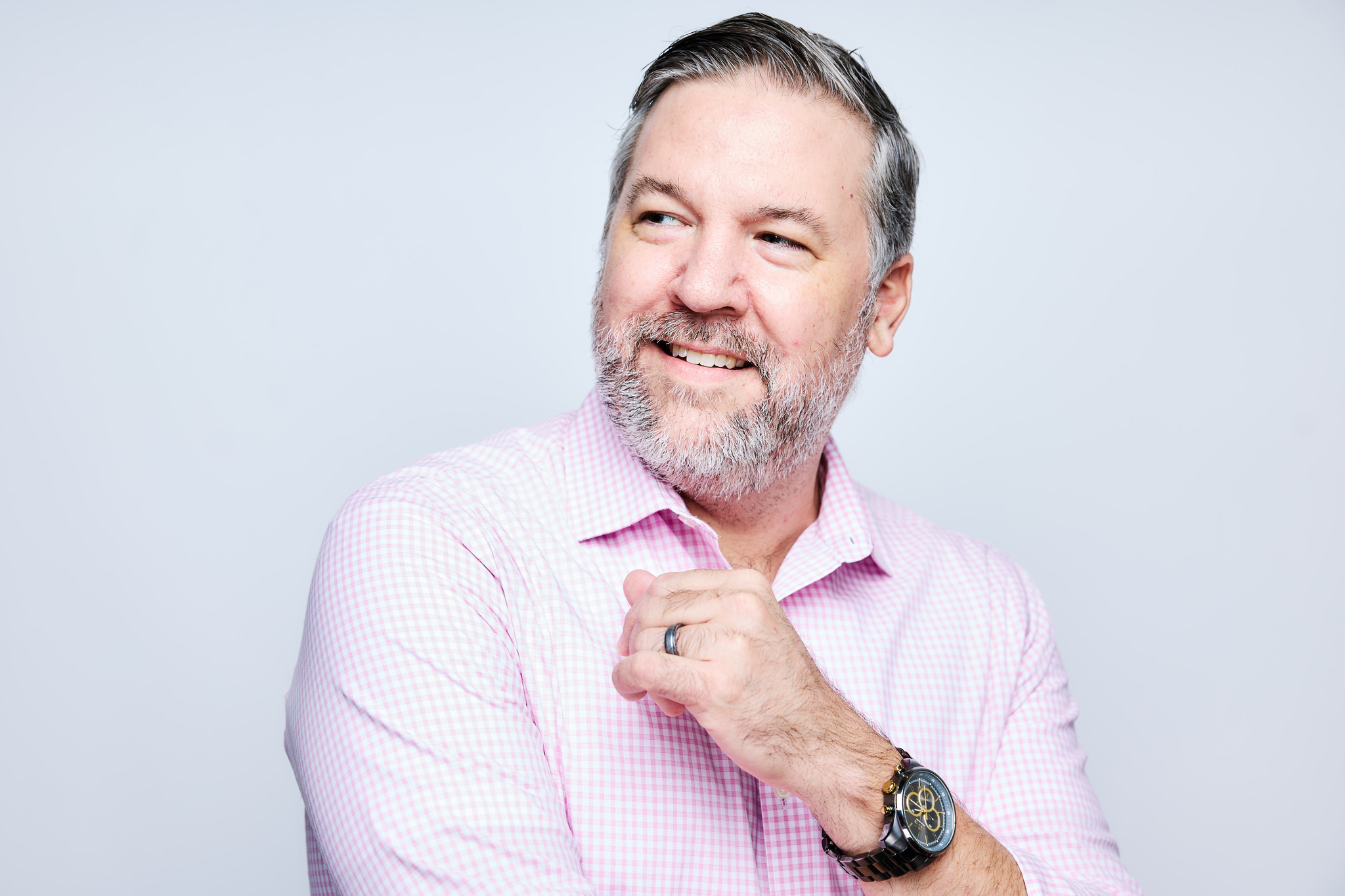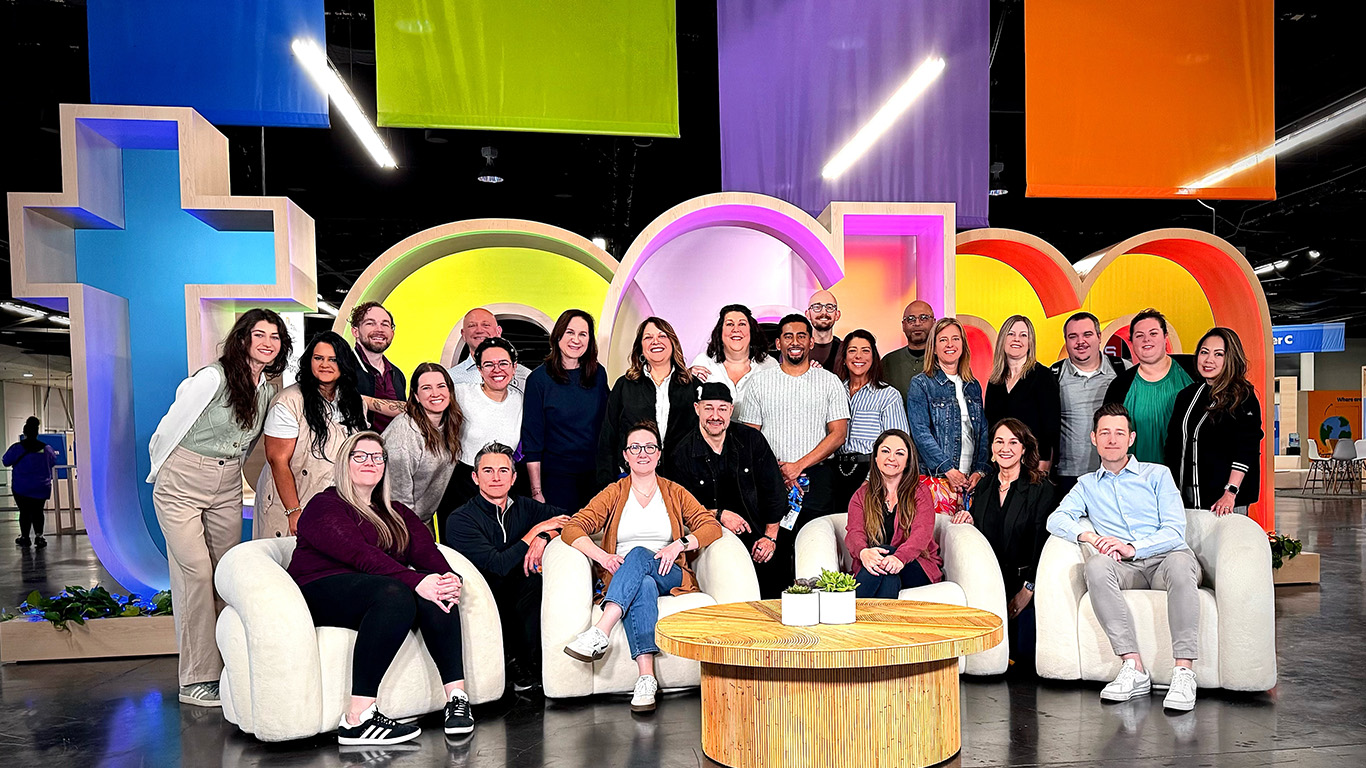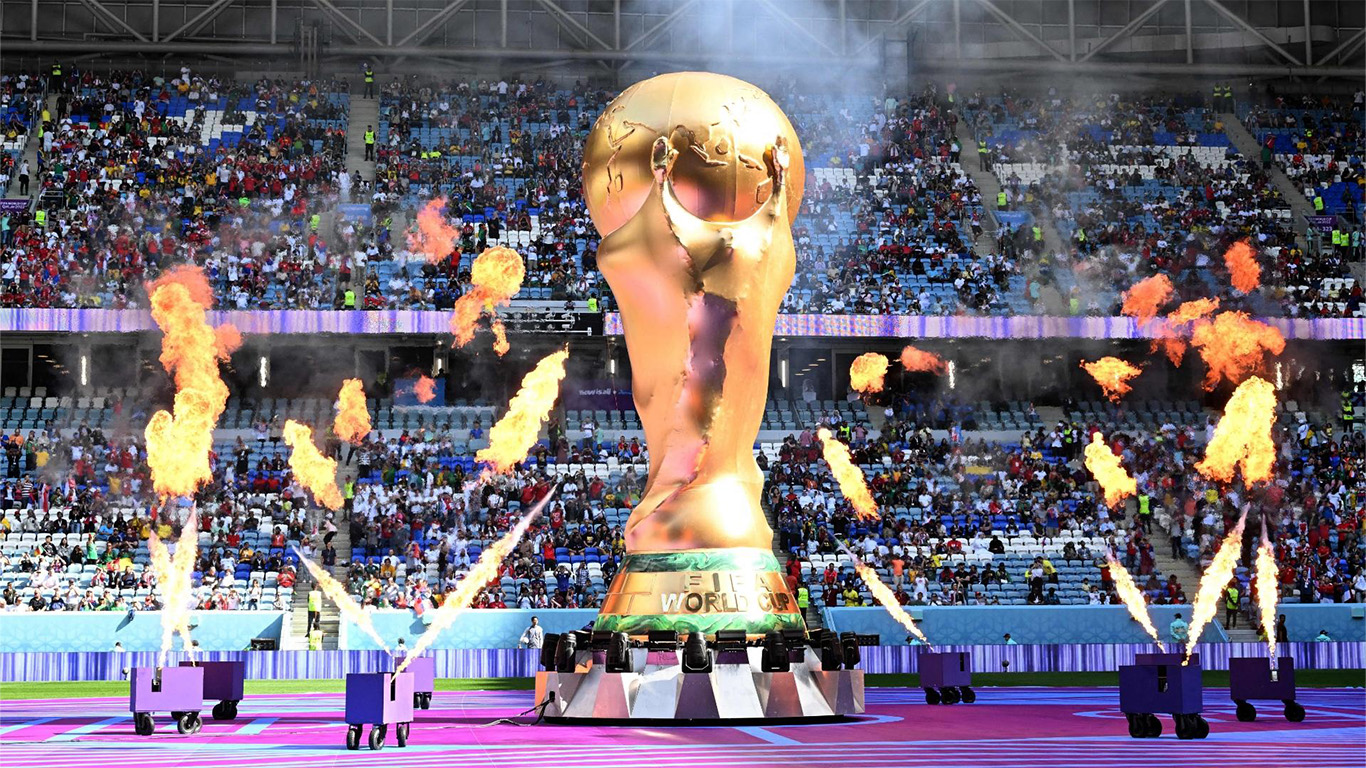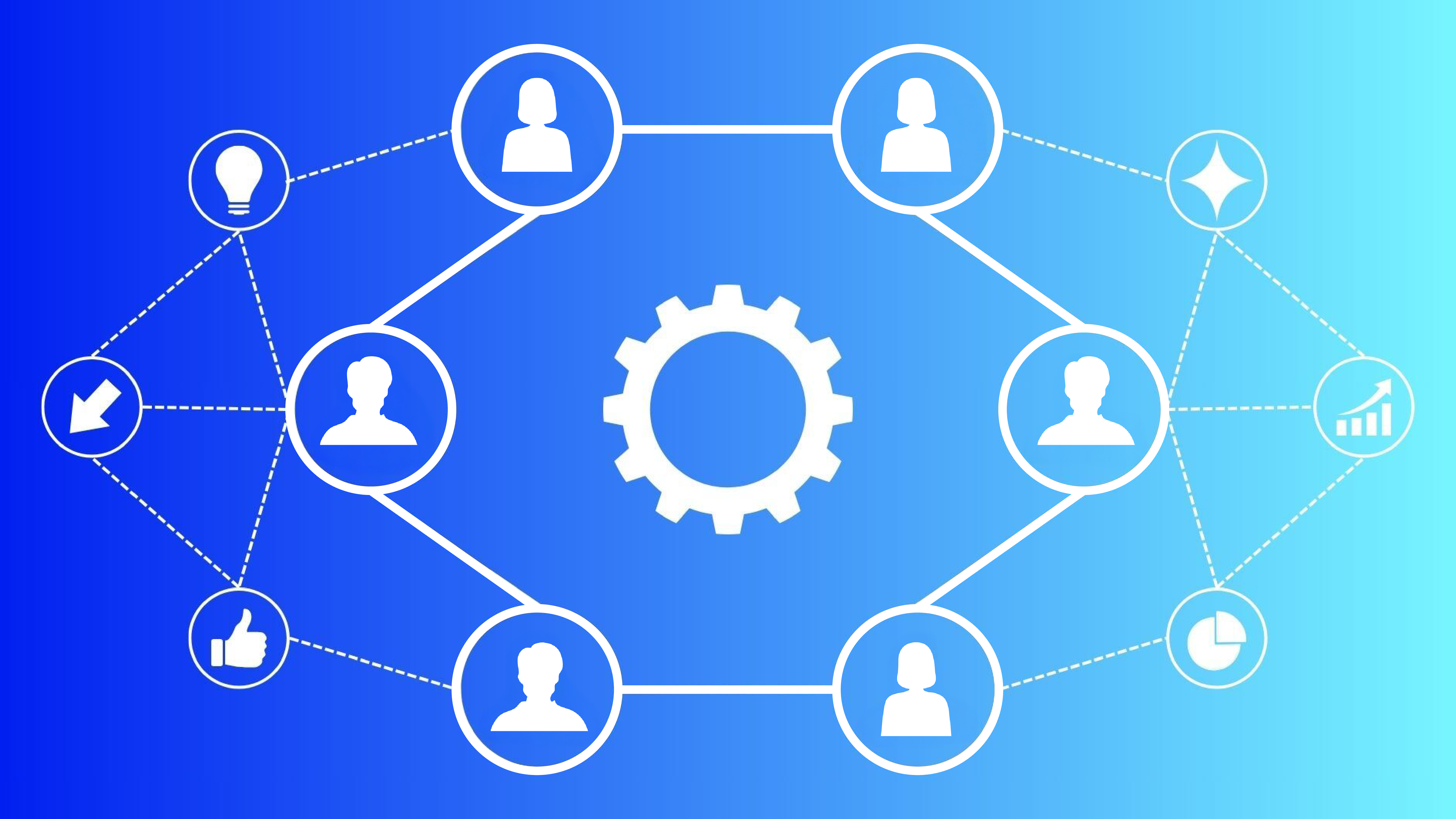The Future of Keynote Design Is Here
The Future of Keynote Design
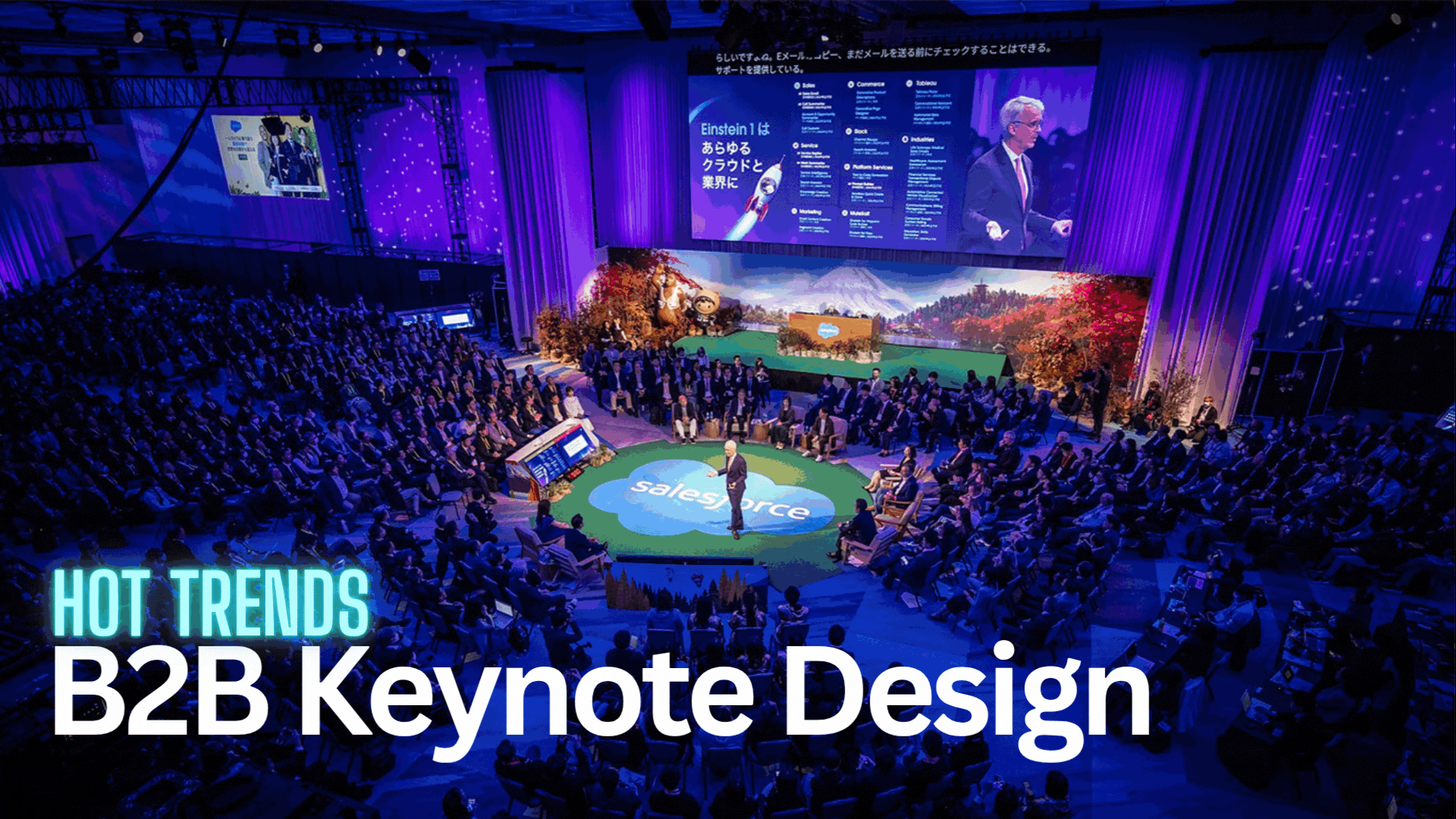

Keynotes are dead. At least, the old version is.
What’s replacing them? Experiences that blur the line between business presentation and cultural event. Keynotes that feel more like music festivals than corporate announcements. Stages that transform into living rooms, art installations, and immersive worlds.
The most forward-thinking brands have already moved beyond traditional presentation formats. They’re creating general sessions that channel the cozy maximalism of a TikTok home tour, the kinetic energy of live theater, and the architectural minimalism of luxury retail, all while delivering strategic messages that drive business.
We surveyed the landscape—recent client work, industry flagships, future-casting reports, architectural innovations, and even the 2025 Tony Awards to identify 12 trends redefining what keynotes can be. More than aesthetic choices, these trends change how brands connect with audiences in an increasingly experience-driven economy. In a world where attention is the ultimate currency, these trends reveal how the smartest event designers are staying ahead of the curve.
Go ahead, dive in.
Spatial and Environmental Design
1. In-Home Sets
- The Shift: Corporate stages are trading slick minimalism for cozy living room vibes. Think couches, rugs, lamps, and bookshelves that make audiences feel like they're visiting a friend.
- Why It Works: Intimacy beats intimidation. These environments create psychological safety and genuine connection. When your audience feels comfortable, they're more likely to engage, remember, and act.
- See It in Action: Google’s Gemini at Work event utilized a living-room style set with deep lounge seating to intentionally soften the formality of a traditional keynote environment, supporting a more human-centered approach to thought leadership.
2. World-Building Sets
- The Shift: Brands are ditching corporate branding for bold storytelling environments. The set becomes its own character, sometimes even more memorable than the speakers themselves.
- Why It Works: Stories stick better than statistics. When your environment tells a complete narrative, you create emotional connections that transcend traditional B2B boundaries.
- See It in Action: The Burj Azizi launch event featured an emotionally charged keynote design, with kinetic stage elements, an overhead LED ceiling, and layered scenic panels—an elegant fusion of digital world-building and physical storytelling.
Visual Frameworks and Canvases
3. Ultra-Wide Canvases
- The Shift: Panoramic and ultra-wide LED screens are replacing single focal points with immersive visual experiences that span massive canvases.
- Why It Works: Cinematic storytelling commands attention. These formats enable real-time data visualization and multi-layered motion graphics while completely changing keynote choreography.
- See It in Action: Apple, Salesforce, and Adobe lead this trend. CES took it further with Delta Airlines' keynote at The Sphere, featuring surround LED that completely immersed the audience.
4. Shifting Angles
- The Shift: The most impressive general sessions are abandoning straight-ahead configurations for slanted layouts and 360-degree stages.
- Why It Works: Perspective creates impact. This simple shift makes brands appear more innovative without requiring special equipment or additional cost.
- See It in Action: Salesforce World Tour features 360-degree, in-the-round seating that reimagines the traditional panel format. By placing speakers at the center, the setup transforms passive viewing into a shared experience.
5. Dimensional LED
- The Shift: LED screens are moving beyond content display to become architectural elements—wrapping stages, constructing towers, creating content "ceilings," and forming new shapes.
- Why It Works: Technology accessibility meets creative ambition. LEDs are more cost-effective than ever, sync with lighting effects, work outdoors, and create depth while providing dynamic entrance and exit opportunities.
- See It in Action: Google Cloud Next featured dimensional LED panels and a dynamic overhead installation that evoked movement and forward momentum. Suspended LED spheres added a playful, kinetic layer—bringing color, energy, and depth to a visually cohesive environment.
Aesthetic Philosophies
6. Minimalist Aesthetic
- The Shift: Some brands are choosing scenographic restraint—one chair, one screen, one big idea—letting lighting, sound, and video content carry the weight.
- Why It Works: In a noisy world, restraint commands attention. This approach focuses on the message while allowing presenters to breathe and audiences to concentrate.
- See It in Action: IBM Think demonstrates how minimalist stage design can pack maximum punch when executed with precision and purpose.
7. Maximalist Aesthetic
- The Shift: Other brands are embracing bold patterns, textures, and intentional visual richness, with Pinterest's 2025 Predicts report calling it "more is more."
- Why It Works: When business trips must provide escape and content overload owns attention spans, maximalism delivers the immersion everyone craves.
- See It in Action: Adobe MAX showcases how maximalism can enhance rather than overwhelm when every element serves the overall narrative.
Materiality and Texture
8. Organic Materials
- The Shift: Designers are prioritizing warmth and tactility through natural glass, reclaimed wood, natural stone, and innovative bio-based materials like mycelium products.
- Why It Works: Natural materials create authenticity. They showcase natural patterns, textures, and imperfections that add character and visual interest while making spaces feel grounded and genuine.
- See It in Action: C2 Montreal incorporates organic, leafy materials and natural forms in its set designs, proving that nature-inspired elements can feel both contemporary and timeless.
9. Layered Fabrics
- The Shift: Drawing inspiration from the dramatic flair of baroque elegance and contemporary social event design, draped and layered fabrics are experiencing a major resurgence. Designers are moving away from flat designs toward depth, layers, and shadow through layered fabric elements, transparent screens, and rear projection scrims.
- Why It Works: Luxurious textiles enhance ambiance by adding theatrical depth and visual intrigue while creating elegant, sophisticated atmospheres that photographs and films beautifully.
- See It In Action: At MBC’s 2024 Joy Awards, layered fabric installations created a striking “flow state” effect—surrounding attendees in a luxurious, immersive environment that felt both fluid and elevated.
10. Textural Diversity
- The Shift: Designers are embracing textural storytelling—combining diverse materials with varying finishes, colors, and tactile qualities to create rich, layered spaces.
- Why It Works: Different textures evoke distinct emotional responses. Smooth surfaces convey sophistication and calmness, while coarse textures add warmth and earthiness.
- See It In Action: At Shopify’s Summit 2025, the main stage design brought the brand’s builder mentality to life. Inspired by the grit and craft of commerce, the environment featured working garage doors, hidden crate entrances, and tactile materials like tape, metal, and cardboard, turning the merchant’s journey into a tangible, immersive experience.
Dynamic Elements
11. Multi-Sensory Experience
- The Shift: Keynote design is evolving beyond sight and sound to create systematic multi-sensory engagement through strategic use of scent, tactile elements, and immersive sound scoring.
- Why It Works: Multi-sensory strategies are essential for winning audience loyalty and creating memorable experiences. Research shows that distinctly scented environments enhance recall for other event attributes, with effects lasting up to two weeks after exposure.
- See It In Action: Microsoft’s Ignite keynote leveraged high-impact visuals, precision-timed lighting cues, and spatial audio technology to deliver an immersive environment—strategically reinforcing sonic branding through multidimensional sound design.
12. Architectural Lighting
- The Shift: Designers are using lighting as part of the design language through architectural light structures, kinetic light walls, and programmable LED tubes that double as scenic elements.
- Why It Works: Lighting is the most flexible way to shift mood, tone, and pace. It sets ambiance, signals topic changes, and creates memorable comeback moments with nostalgic elements like laser beams and neon.
- See It in Action: Web Summit demonstrates how purposeful lighting can accomplish strategic goals while providing boundless creative options without massive cost increases.
The Bottom Line
These 12 trends signal a fundamental shift in how we think about keynote experiences.
The lines between entertainment, retail, hospitality, and corporate events are blurring more than ever, and your audience expects more immersive, multisensory, culturally-fluent experiences. In an attention economy where every moment matters, keynote design has evolved from backdrop to main character.
Are you ready to design the future?
The teams at Opus Agency live at the intersection of culture and strategy to design trendsetting keynote experiences. Let's craft something built for the future.
Transform your next keynote with Opus Agency.
More Like This, Delivered to You
As our agency continues to explore the future of experiences, you can join us and leaders from Google, Microsoft, Salesforce, and many more of our clients to stay ahead of what’s next by subscribing to XO. Each month, you’ll receive our latest insights and perspectives, plus carefully curated links worthy of your next new tab.
Insights in
the Inbox
XO is a newsletter with a mission to be loved by marketing executives and event professionals.
Through careful curation and purposeful prose, XO serves thousands of leaders who want to stay on top of what’s new and what’s next in the world of experiences.
To join in, see past issues or subscribe below.
